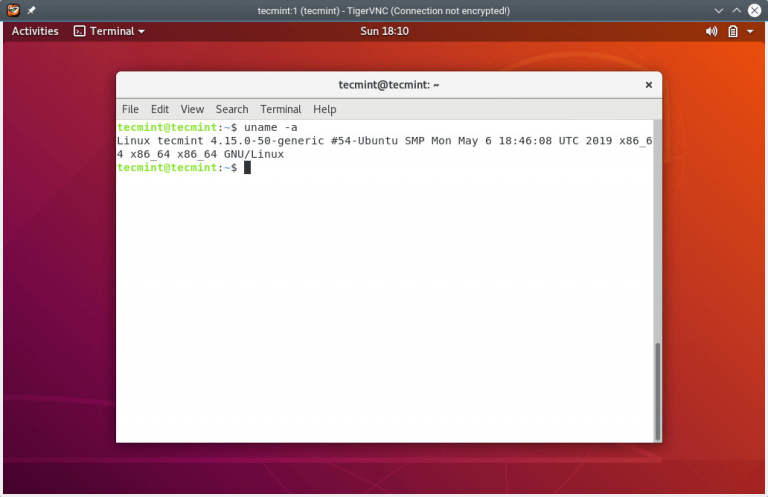

Sec-types Specify which security scheme to use for incoming connections. Default is to accept connections from any IP address.

Prefix is optional and is specified as a number of bits Rules that include only an action sign (+, - or ?) will match any IPĪddress. Theįirst rule matching the IP address determines the action to be performed. Specified address group), - address/ prefix (rejectĬonnections) or ? address/ prefix (query the local user). The following: + address/ prefix (accept connections from the The file should include one rule per line, and the rule format is one of Default isįilename This parameter allows to specify a file name with IP access control rules. * meaning all, but you can target a specific source file if you Stderr, stdout or syslog, and level is betweenĠ and 100, 100 meaning most verbose output. Logname: dest: level Configures the debug log settings. Mode Specifies the mode of the Unix domain socket. Path Specifies the path of a Unix domain socket on which x0vncserver listensįor connections from viewers. UseIPv6 Use IPv6 for incoming and outgoing connections. UseIPv4 Use IPv4 for incoming and outgoing connections. Listening on TCP port can beĭisabled with -fbport =-1. Viewers (the protocol used in VNC is called RFB - "remoteįramebuffer"). Port Specifies the TCP port on which x0vncserver listens for connections from If not specified, it defaults to the value of the PARAMETERS -desktopĭesktop-name Each desktop has a name which may be displayed by the viewer. Parameter names are case-insensitive, their order in the command The leading dash canīe omitted, or it can be doubled if desired (like in GNU-style long SomeParameter= value Assign the specified value to the parameter. SomeParameter=0 Disable the parameter, turn the feature off. Parameters that simply enable or disable some feature. Line (here we use ` SomeParameter' as an example parameter name): - SomeParameter Enable the parameter, turn the feature on. There are several forms of specifying parameters in the command Optional, but normally you would have to use the PasswordFile List of all valid parameters with short descriptions. X0vncserver interprets the command line as a list of Otherwise x0vncserver will fall back to polling the screen for XDamage will be used if the existing X server supports it. Shares an existing X server (typically, that one connected to the physical Xvnc(1), it does not create a virtual display. Remotely accessible via VNC, TigerVNC or compatible viewers. X0vncserver is a TigerVNC Server which makes any X display This project is hosted by The FLTK Team.X0vncserver - TigerVNC Server for X displays SYNOPSIS All other content is copyright 1998-2022 by Bill Spitzak and others. TigerVNC 1.4.0 should work fine though, so please test the beta we just released."Ĭomments are owned by the poster. Meaning that TigerVNC 1.3.1 and FLTK 1.3.3 won't get a fully functional keyboard. All of them are included in FLTK 1.3.3, but unfortunately some things changed a bit. "We rely on a lot of patches for FLTK 1.3.2 to get things right. See this comment in an unrelated TigerVNC bug report: The ctrl+x combinations work as expected. Now downgrade fltk and restart the vncserver. on my box it runs lxde.Ģ) My ~/.vnc/xstartup contains online 1 line: exec startlxde and is started with this command: vncserver -geometry 1792x1008 -alwayssharedģ) Connect to the vncserver and try to ctrl+f or ctrl+t in chromium for example.
#Tigervnc arch linux install
See this bug report on the distro: ġ) Install tigervnc and a DE. The Arch devs believe this to be an upstream issue. Downgrading to 1.3.2-5 fixes the problem. The 1.3.3-1 release breaks any combination of ctrl + another key when connected to a tigervnc server. key functionality not workingģ - Applies to all machines and operating systemsįltk 1.3.3 breaks control keys within vnc-sessions


 0 kommentar(er)
0 kommentar(er)
